12 Oct2015
8 things to do in Lloret de mar
I remember visiting Lloret de Mar briefly a few years ago with my best friend at that time when I still worked as a flight attendant. And then again during TBEX conference in Girona for a couple of hours as part of post-trip.
I know many people consider Lloret as probably the most touristy out of the Costa Brava towns and yet they prefer to visit a different place. But exactly because I knew how the town looks like already, when I heard another TBEX conference was going to take lace there, I only said yes because of the location.
Costa Brava is definitely one of my top destinations in the entire world. It simply activates all my senses.
This time I had a chance to explore more of Lloret de mar.
The first tourists started to come to Lloret de mar in 1950’s from England. Lloret became such a popular destination that even celebrities, such as Frank Sinatra or Penelope Cruz came here. It’s also a famous movie location (e.g. part of Sahara movie was filmed here.)
In 2014 more than 1 million tourists visited Lloret and stayed at hotels and even more tourists rented apartments.
200,000 tourists visited Lloret only in summer 2014 (mostly Catalans, French, English, German and Russian.) Lloret was the first tourist Spanish destination to open to the Russian market.
It has only around 40,000 inhabitants.
Nowadays, Lloret is mostly visited by two groups of tourists – teenagers and those in their early 20’s who come here to get wasted at the famous parties; and elder couples or groups of friends.
However, the tourism board is trying to attract families and young couples organizing different activities for them.
I admit that many travel bloggers were surprised when they came to Lloret and saw all the party people … they did not understand why this town was chosen as the conference location.
But you have to open your mind to go beyond what a first time visitor does and sees in Lloret.
If I tell you that Lloret de mar is way more than just crazy parties (and I hate parties!), then trust me and go see yourself. You don’t have to spend any minute on the main street Avinguda Just Marlés Vilarrodona full of bars and fast food restaurants if you do not wish so ;)
8 things to do in Lloret de mar
1. Beach
It would not be me if I did not recommend you to spend time at the beach. Many tourists do come here to do the same, true, yet it is definitely something you need to do as well. It was rewarded Blue Flag for cleanliness.
The palm trees around the beach were brought here from tropical places.
The houses along the beach used to be Indiano houses but only two of the original ones remained now. The first one is the Maritime Museum and in the second one they want to open another museum.
Passeig d’Agustí Font street going along the beach offers some restaurants. I recommend Marsol restaurant for lunch. Jogging/cycling/skating along is pretty awesome, too.
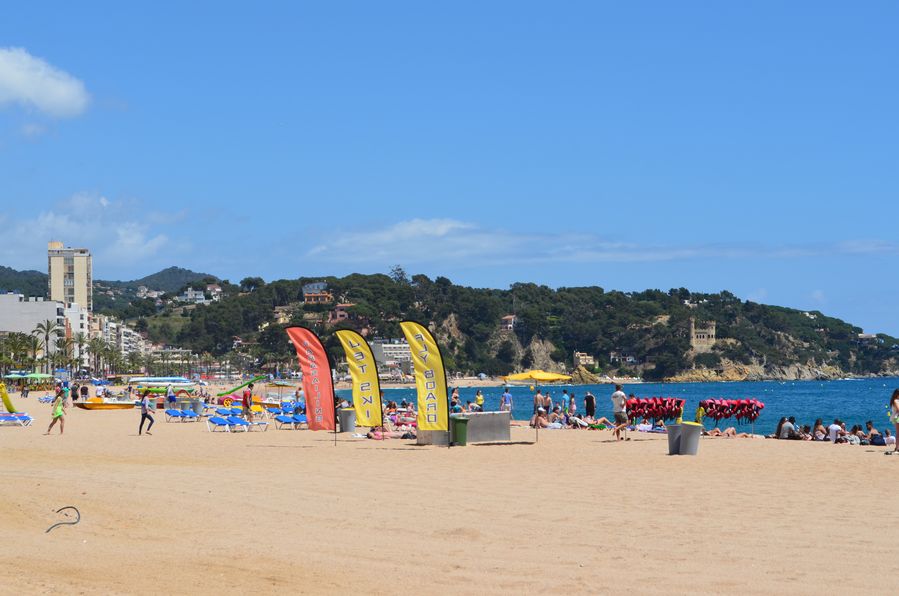
2. Catamaran sailing
One of the trips we did before the conference itself was going sailing. If I remember right, it was more than 100 of us, maybe around 150 bloggers who jumped on a catamaran boat and sailed our way around the coast up North (left on the shore.)
It was pretty windy as almost always in Costa Brava so with my friends we sat on the net trying to warm up with scattered sunbeams. Drinks were included and so was light lunch (not so much for vegan/vegetarians though.)
We anchored in a small bay so the brave ones could go for a swim. On the way back to Lloret the catamaran turned into a huge dance party :)
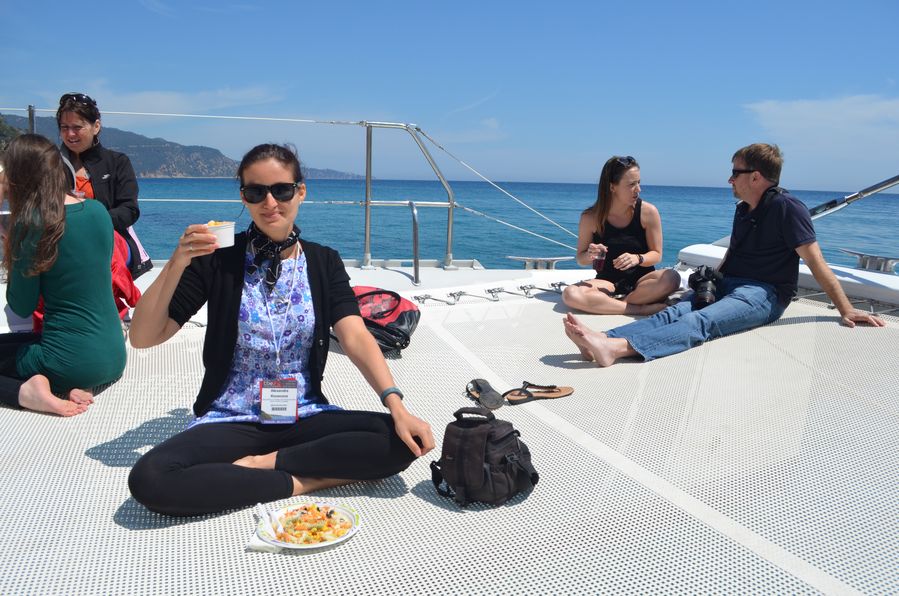
3. Coastal Walk
This is exactly one of the highlights for me. I love walking and I love great views. If the weather is not good enough for sunbathing any more, you can always go for a walk along the coast. It’s like merging sea views with hiking as at some points you do have to walk up.
It’s possible to go both directions from Lloret de mar. Going to the left will get you to a famous coastal villa which is a private house and thus not possible to visit.
Walking to the right though you can visit Fisherman’s Wife statue surrounded by padlocks on the railings. Then slowly follow the Castle of Sant Joan from the 11th century. The castle was restored and since 1992 it’s open to the public.
Eventually, you can walk from there up to Fenals beach. Fresh air, colder breeze, sun, Mediterranean fauna and the dramatic cliffs will create incredible memories!
Oh and don’t forget to get a drink at Cala Banys restaurant on the way. It has spectacular views!

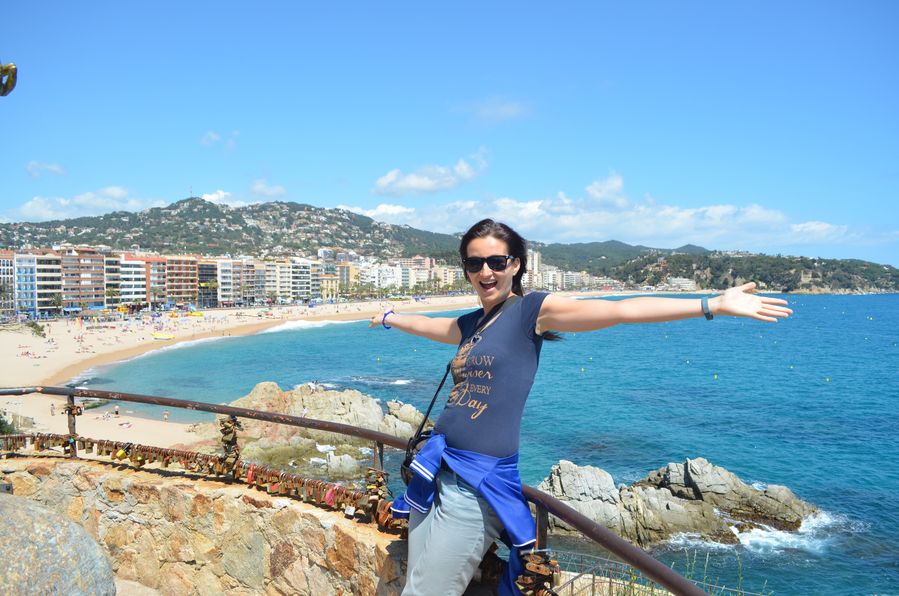
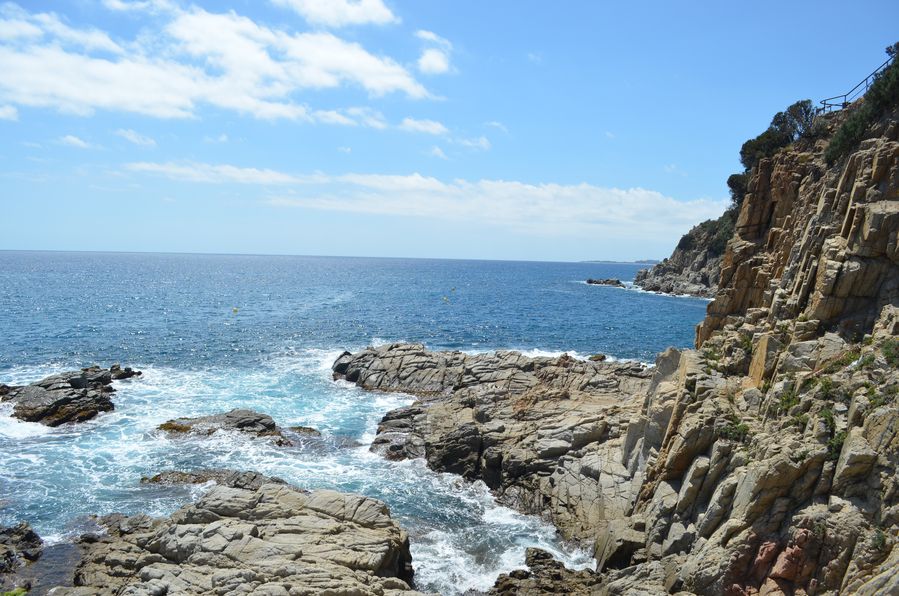
4. Maritime Museum
The Maritime Museum, or Museu del Mar was built by Garriga in 1871. Garriga was an Indiano who left Lloret de mar and opened a building factory in Cuba. Once he came back, he built a new house on the place where the museum is located now. Only the floor tiles are original.
Maritime Museum is definitely an easy way to learn more about the Indiano culture and their way of life in the area. It’s located just a few metres from the beach so easy to access. I wrote an entire post about it.
*Indianos were Catalan emigrants who left in search of fortune, mostly to Cuba. Some of them returned home very wealthy.
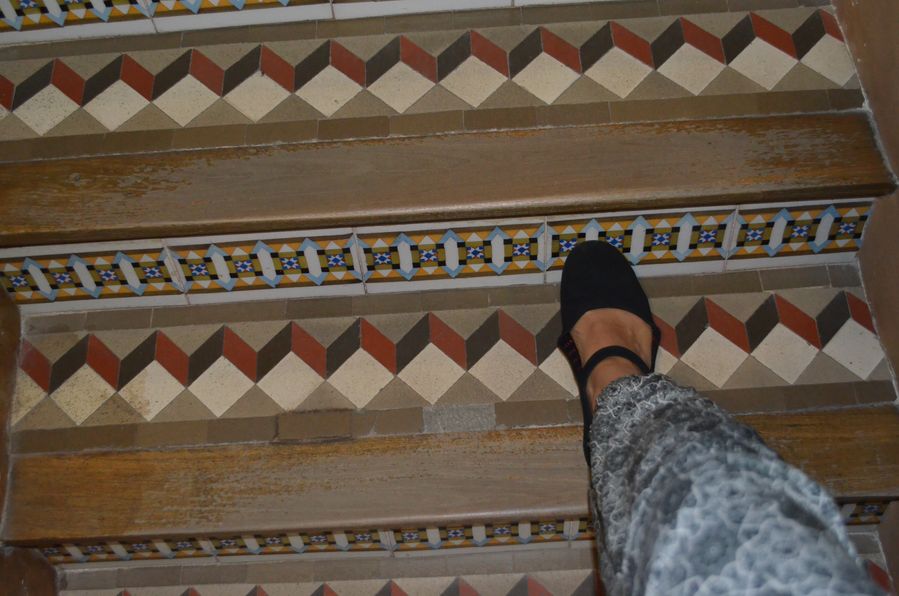
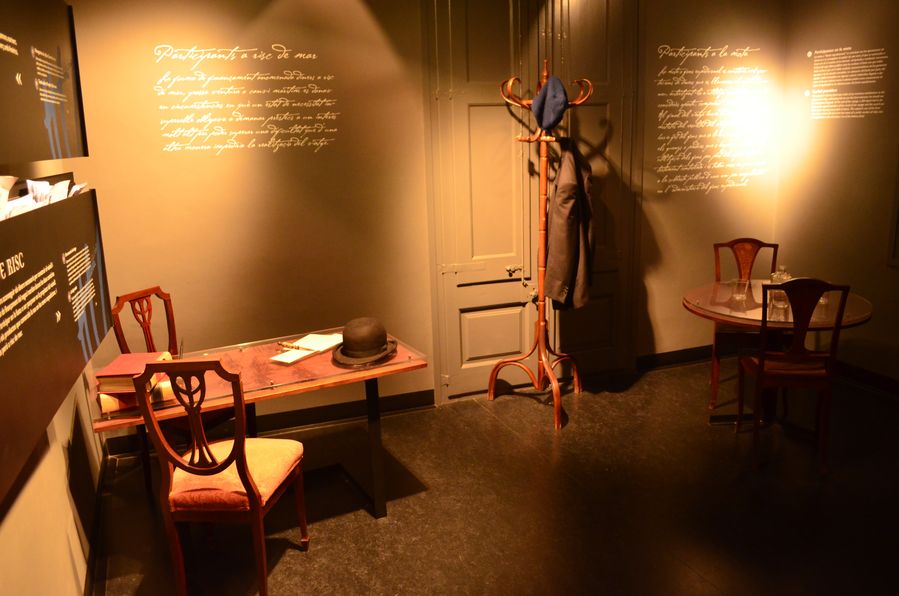
5. Modernist Cemetery of the Indianos
The first cemetery was built in the area already in the 5th and 6th century. At that time people did not live on the coast because of the pirate attacks. They lived 3 to 4 km from the coast and there was a church and a cemetery next to it there.
In the 11th century the owner of Lloret town built the Castle of Sant Joan which walls protected the coast so most of the people moved closer to the sea. The second cemetery next to Sant Romá church was built, and then the third which was flooded once and the bodies started floating around.
So the 4th cemetery in Lloret was built on a hill in the end of 19th century when the Indianos returned here. In 1896 the construction of this modernit cemetery of the Indianos began.
The Indianos built some pantheons and necropolis which copied the real life. There’s the main avenue in the cemetery which was the best place to get buried. Poor people’s graves are in the second or third line.
The last first line pantheon cost 7 euros to be built hundred years ago. The second line cost 1,5 euros.
Each pantheon was designed especially for one family, that’s why they are all different.
At the end of the 19th century the Modernist style was famous around Europe so most of the pantheons were built in that way. We can talk about funeral art with angels, flowers, crosses, virgins symbols. Stone from Montjuic and marble are mixed.
At one tomb there is the Virgin Mary waiting to connect the buried person with the second life. Some flowers (symbol of eternity) melt into the tomb stones which represent Modernist style with no straight lines.
Bonaventura Conill was the most important architect of the cemetery and built 10 pantheons.
The 5,000 square metres of the cemetery are divided into 3 areas (Catholic, other religions, and people who were not baptised.)
Some pantheons can be opened and you can take stairs down. One shows alpha and omega, the first and the last letters of the Greek alphabet = symbolism. A couple of pantheons mix Gothic and Modernist style.
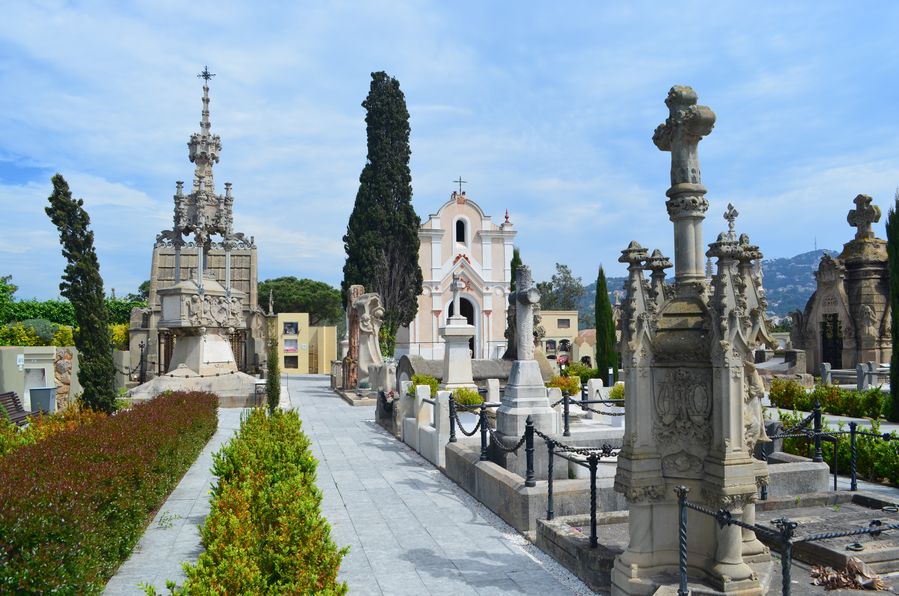
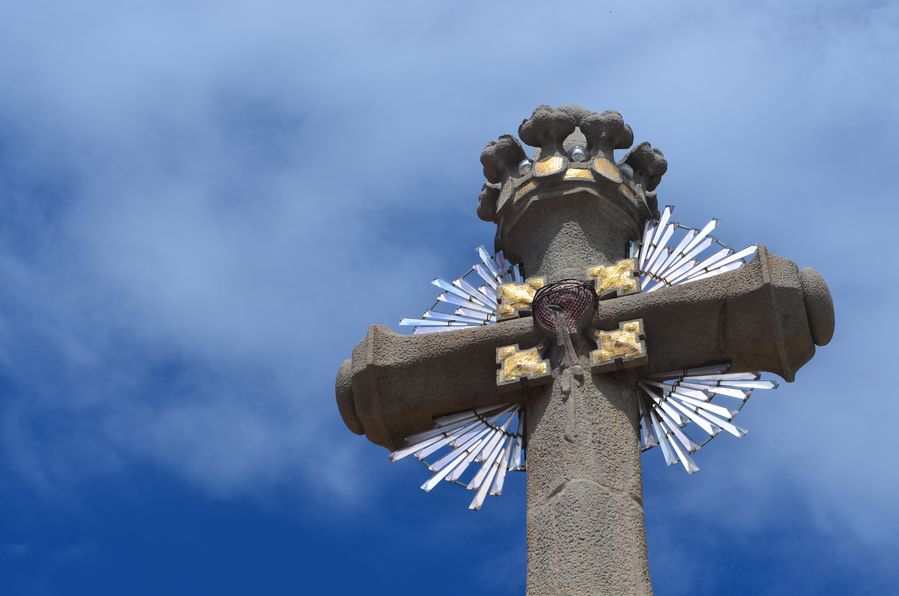
6. Parish Church of Saint Romá
The church dedicated to St. Roman was built in 1509 – 1522. It cost 3,000 Catalan pounds to finish it at the place where the coal was stored first. The construction began on 19th July on the St. Magdalena day which is written in old Catalan on top of the door.
It was built by slaves who wrote on the inside door there is only one God in Arabic signs.
The original church had a capacity of 380 people who exactly lived here in 1509. When in 1543 Barbarosa came to Lloret de mar, all the inhabitants were safe inside the church with hidden door which closed from the top.
The Parish Church of Sant Romá was first built in Gothic style but 300 years later was ruined and Indianos rebuilt it with their money. The restoration of the side chapels was done in 1916 by the same person who restored the cemetery – Bonaventura Conill.
The church roof is decorated with ceramics and mosaics which makes it one of the top landmarks of Lloret. Bonaventura was Gaudi’s friend so he used the same technique as now around
Barcelona. We can observe 6 apostols on both sides of mosaics.
In 1936 Civil war in Spain and the anarchists fired up statues and decoration inside the church so what we can see nowadays represents the modernist style from 1960’s.
The Holiest Sacrament chapel was built in 1916 with money of Narcis Gelats, an Indiano who never came back from Cuba. It was built in memory of his wife Cristina. Narcis sent 25 pesetas via his brother to build the church but he was keeping it and spending just 10 pesetas on the church. When they finally found it out, the Indiano sent the missing money from Cuba to finish the chapel.
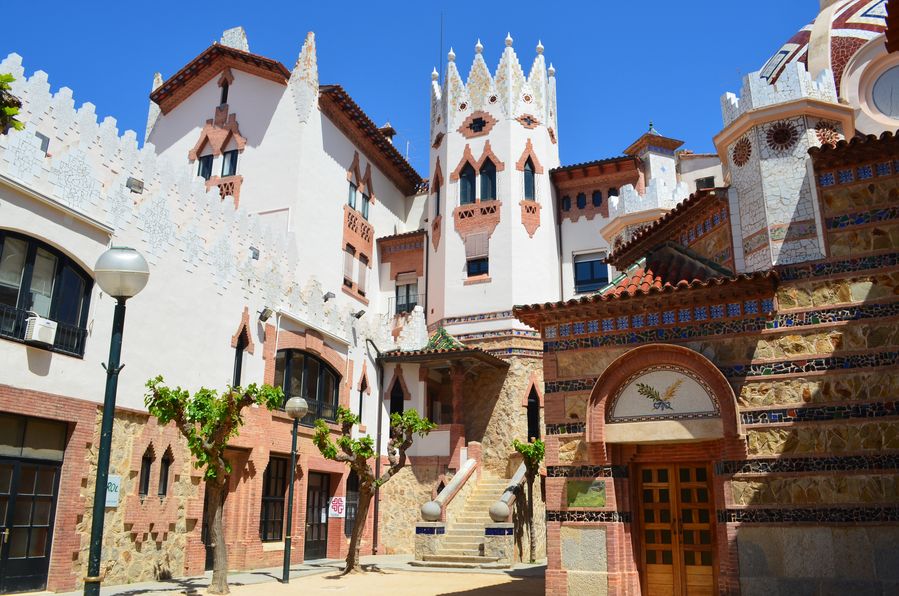
7. Sant Pere del Bosc
Sant Pere del Bosc is what was definitely sticking out from my memories of Lloret de mar. This modernist building with a small chapel of Our Lady of Grace now turned into a 5 star spa hotel with a restaurant!
It has an interesting history … Since the 10th century, there was a Benedict church on the Sant Pere del Bosc (in Spanish Saint Pedro del bosque) just 6 km from the Lloret city centre. It was destroyed in 1695 when the French army entered Catalonia, then restored in 1789 with a new baroque chapel.
Then all the religious places became part of the state so the Mayor of Lloret de mar sent a letter to Nicolau Font i Maig, one of the most famous Indianos, who paid 600,000 reales to buy the sanctuary. He was just 30 years old when he built the church on the hill.
Before Nicolau worked with his rich uncle in Cuba; first settled in Jaruco town where he traded, then some years in Paris. Many legends talk about him. For example, he built two small shelters on the hill because once he walked to the village and he got really wet in a storm so he didn’t want the same to happen again. He walked with a sword inside a stick for protection. When Font still lived in Paris, he would drive in a carriage with white horses when he was in a good mood, otherwise black ones. Font never had a noble title as he didn’t want to pay for it but everyone knew him as Conde de Jaruco. Nicolau Font is now buried in the chapel and all the new owners will get buried there, too.
The actual owner is Nicolas Cabañas who lives in the pink house not far from the hotel.
As Sant Pere del Bosc is a historical building, it has to keep its original look which is what makes it unique. All the rooms are super fancy, the foot massage is great and saunas and little pools are very relaxing. A must do when in Lloret.
My readers can use a special promotion code ”BLOG2015” at the time of the reservation :)
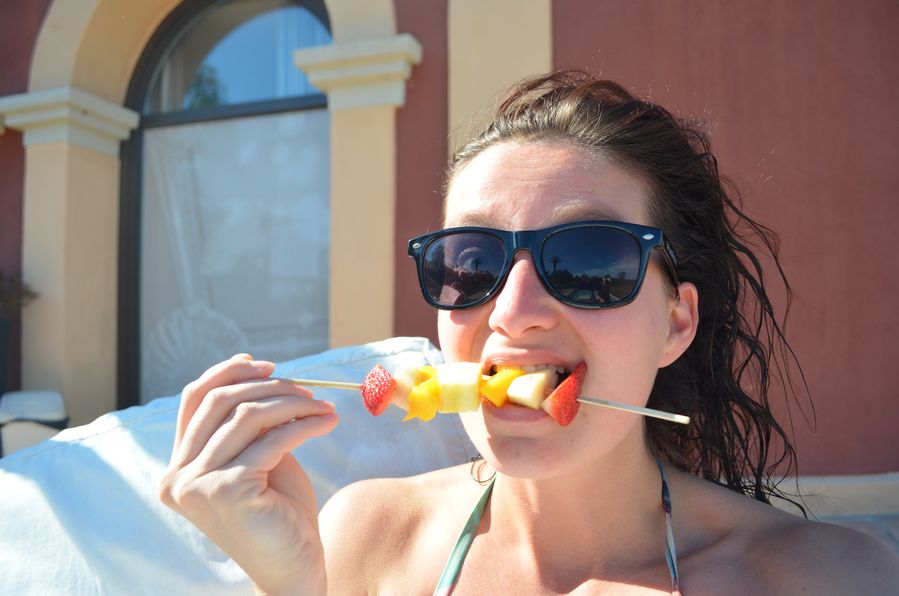
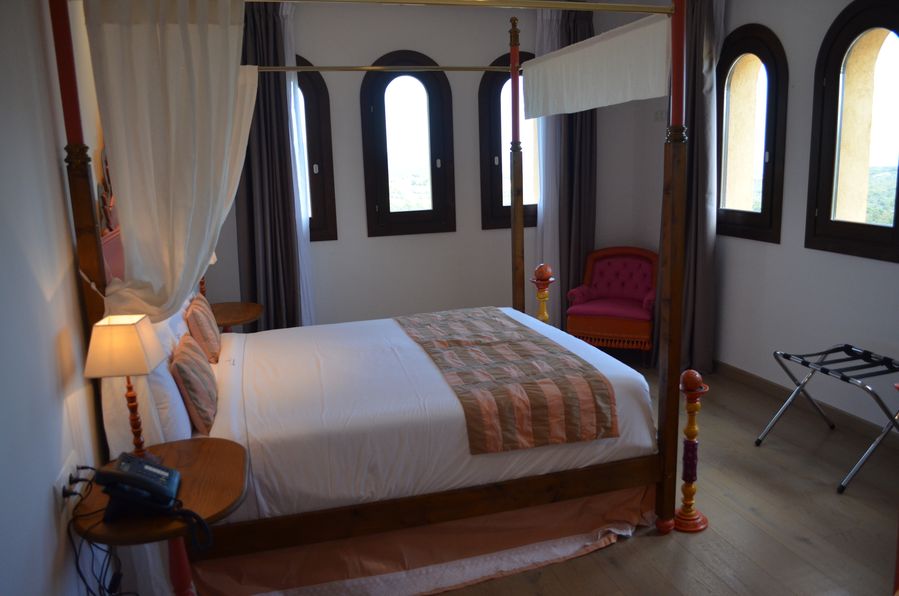
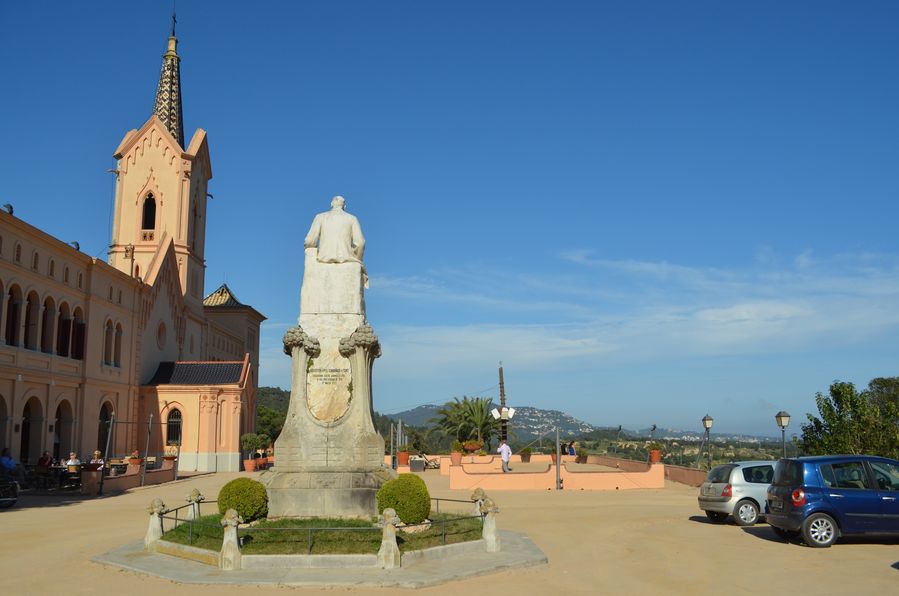
8. Yoga in Santa Clotilde Gardens
Santa Clotilde Gardens is most probably my very favorite thing to do in Lloret de mar.
The Marquis of Roviralta traveled all over Europe before he decided to build these gardens once he fell in love with Clotidle, a local lady in Lloret de mar. It took 8 years to design the gardens by Nicolau Rubió until they were finished in 1926. They were designed in romantic Italian Renaissance style.
Marquis was collecting tiles in different shapes and helped a lot of people in the Civil War. He owned a pharmacy industry in Europe and South America and used his wealth to build this garden.
Unfortunately, Clotilde died just a few months later so Marcus got married for the second time. Together they built a massive villa we can see now.
In 1997 the Town Hall bought the gardens, restored them in 2006 keeping the same shape and open to the pblic one year later. Only the gardens belong to the Minicipality while the house is still private (the descendants of Marquis live in Barcelona but come over here for weekends.)
What makes the gardens special is not only their location on top of the cliffs, but also the different green colours of the bushes, whitish statues (e.g. Hercules, cupids, nymphas, lions to protect the entrance) and water all around.
When we hear the word ”garden”, we think of flowers but in here we won’t see many flowers. Mostly Mediterranean bushes, ivy and trees. The ivy is used just on the vertical side of steps so we don’t step on it directly.
The oldest trees are almost 100 years old. Many eucalyptus, pine, oak, orange, citrus, cypres and laurel (Lloret name comes from laurel trees in the area – lauretum in Latin) trees can be found in the gardens.
The Sense Square is the part of the gardens where all our senses come to life – we can watch the sea, touch the trees, smell the flowers, hear the sea and taste (if we had a lunch in here.)
It was my second time to stroll around the gardens but the very first to practice yoga in Santa Clotilde Gardens there on the grass.
Overlooking a beautiful beach down the cliff, fresh air, silence, and lush greenery around us made for a special moment.
For more information, visit Lloret de mar tourism website.
Posted in Europe, photo, press trip, Spain, tips, travel Tags: Costa Brava, Lloret de mar, Spain










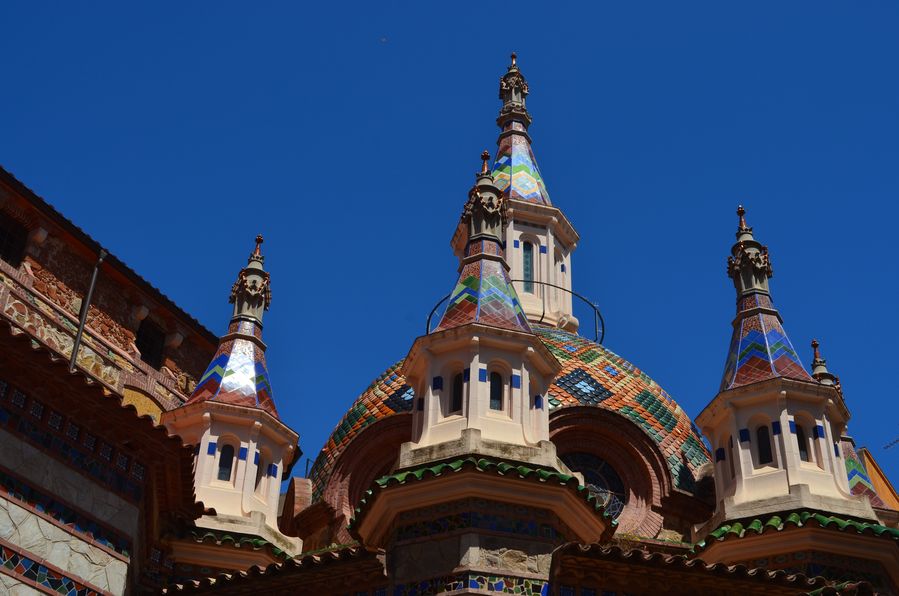



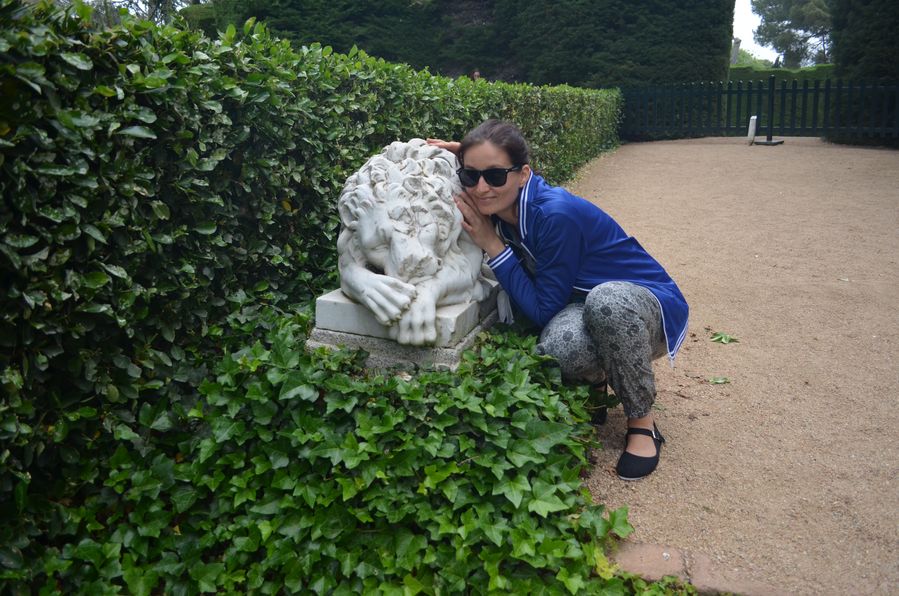
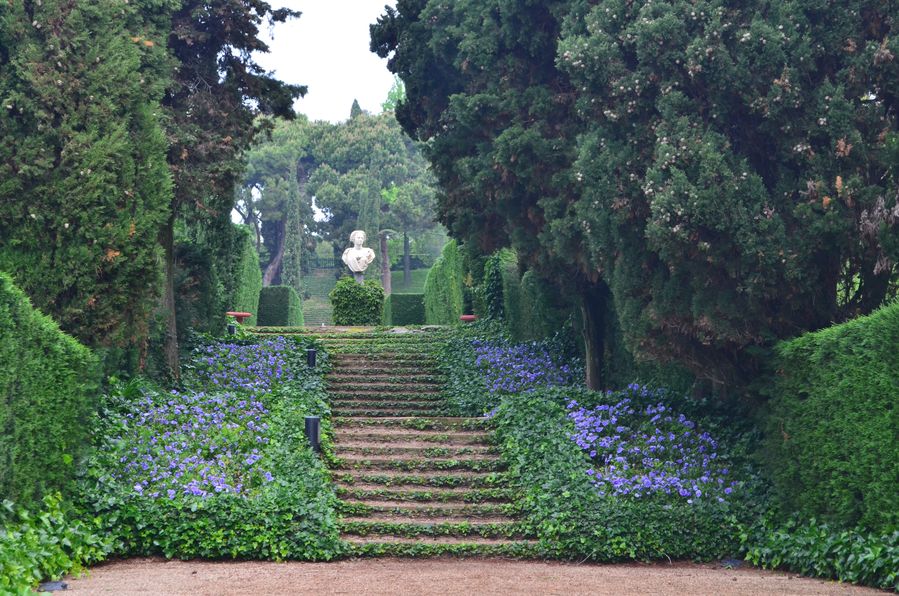
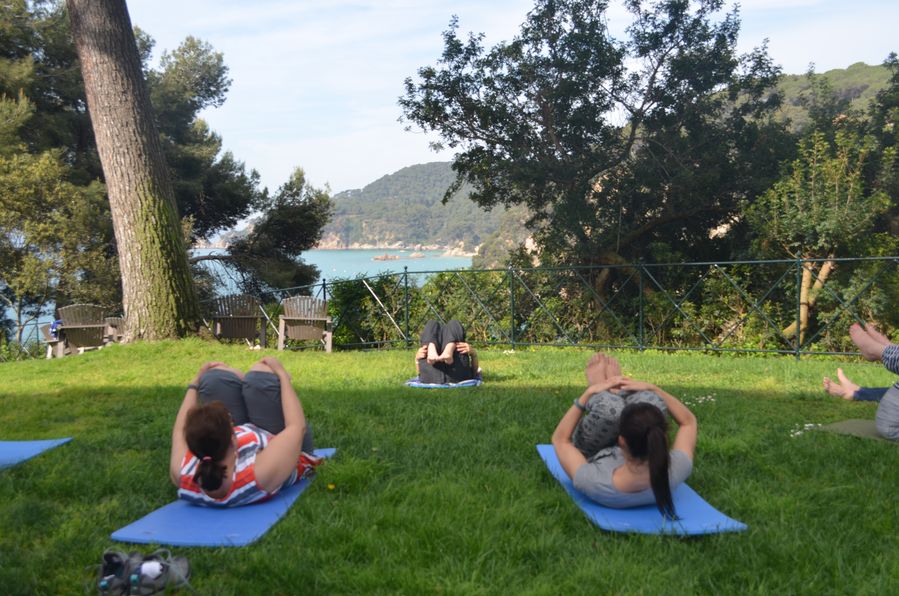

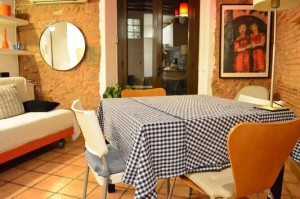
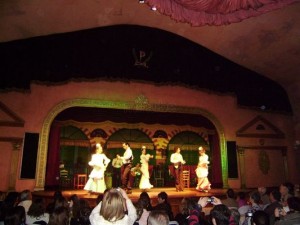
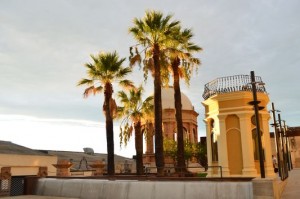
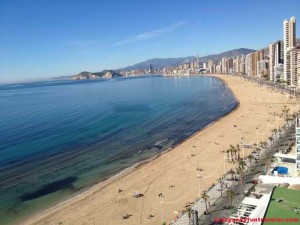
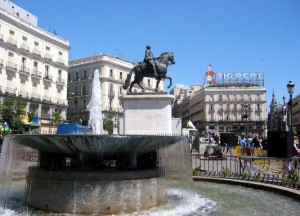
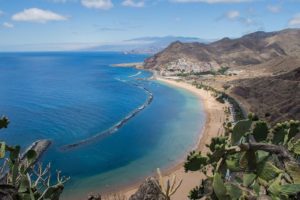
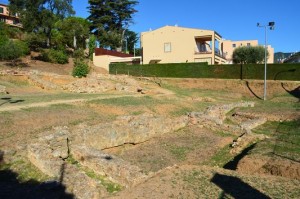
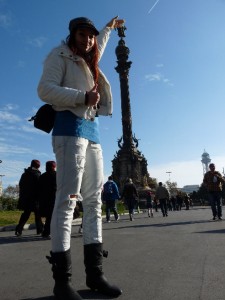
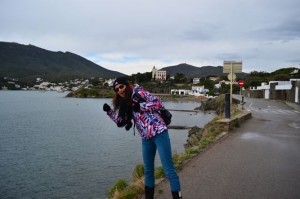
Izy Berry
| #
Good article!! why you dont like parties !!! this place is amazing
Crazy Sexy Fun Traveler
| #
Haha because I don’t like loud music and don’t drink alcohol so drunk people bother me if I cannot speak to them about anything worth-chatting :D